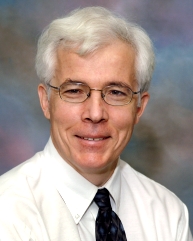
John A. Tarduno
Professor of Earth and Environmental Sciences
Professor of Physics and Astronomy
LLE Distinguished Scientist
Dean for Research in Arts, Sciences and Engineering
PhD in Geophysics, Stanford University, 1987
- Office Location
- 227 Hutchison Hall
- Telephone
- (585) 275-5713
- Fax
- (585) 244-5689
- Web Address
- Website
Biography
Professor Tarduno received his BS degree in geophysics from Lehigh University in 1983 and an MS and PhD in geophysics from Stanford University in 1987. He was a Joint Oceanographic Institutions Fellow at Stanford University in 1988 and a National Science Foundation Postdoctoral Fellow at ETH-Zurich in 1989. From 1990 to 1993 he was Assistant Research Geophysicist with Scripps Institution of Oceanography. He joined the Department of Earth and Environmental Sciences at the University of Rochester in 1993 where he founded the paleomagnetism laboratory. Professor Tarduno is currently Professor of Geophysics and Chair of the Department of Earth and Environmental Sciences, and holds a joint appointment as Professor of Physics and Astronomy.
Professor Tarduno is a member of the American Geophysical Union and a fellow of the Geological Society of America. He is also an elected member of Phi Beta Kappa, Omicron Delta Kappa, Phi Eta Sigma and Sigma Xi. He was a member of the Joint Oceanographic Institutions for Deep Earth Sampling (JOIDES) Lithosphere Panel (1992-1995), served as liaison to the JOIDES Ocean History Panel (1992-1995), and chaired the JOIDES Scientific Steering and Evaluation Panel on the Dynamics of Earth's Interior (1997-1999). He served on the American Geophysical Union's Geomagnetism and Paleomagnetism Executive Committee between 1996 and 2002, and on the editorial board of Geology (2001-2003), as a guest editor of Geochemistry, Geophysics, Geosystems (2004-2005) and on the Review Advisory Committee of the Institute for Rock Magnetism (2005-). He is currently editor of Geochemistry, Geophysics, Geosystems (G-cubed).
He was a JOI Distinguished Lecturer in 2000/2001 and served as lead proponent and co-chief scientist on Ocean Drilling Program Leg 197 (Motion of the Hawaiian Hotspot: A Paleomagnetic Test, 1 July - 27 August 2001). In 2001, he received the University of Rochester's Goergen Award for Distinguished Achievement and Artistry in Undergraduate Teaching. In 2003, he was elected a fellow of the American Association for the Advancement of Science. Professor Tarduno was the 2004 American Geophysical Union/Geomagnetism and Paleomagnetic Section Bullard Lecturer, and was awarded a Guggenheim Fellowship in 2006.
Research Overview
Professor Tarduno's research centers on the origin of the geodynamo, its history and the basic magnetic properties of rocks and minerals. Such questions have become of significant recent interest in astrophysics in relation to the problem of early star and planet formation. To investigate the magnetic field of the early Earth, Professor Tarduno and his research group have developed a method to derive information on past field strength from single silicate minerals. Such minerals often contain minute magnetic inclusions that are ideal records of the geomagnetic field. The approach utilizes a CO2 laser and SQUID magnetometer system under development in the Paleomagnetism Laboratory. Paleomagnetic and paleointensity data of late Archean/early Proterozoic age (approximately 2.7 to 2.5 billion years old) show many of the hallmarks of the present geomagnetic field. At present data from older times, when Earth may have lacked a solid inner core, are sparse.
Professor Tarduno and his students are conducting laboratory investigations and field studies (in southern Africa) to define the strength and morphology of the geomagnetic field between 3.0 and 3.6 billion years ago. These data will be useful for future considerations of the interaction between the early Earth's magnetosphere and the active young Sun. Professor Tarduno also studies basic rock and mineral magnetic properties, including low temperature processes such as the Verwey transition, the cubic to monoclinic change in crystal structure seen in magnetite upon cooling below 120 K. This work is supported by the development of a new experimental device which allows the measurement of remanence directions at low temperature using a SQUID magnetometer.
For further details, go to Professor Tarduno's home page.
Research Interests
- experimental geodynamics
- planetary science and astrophysics
